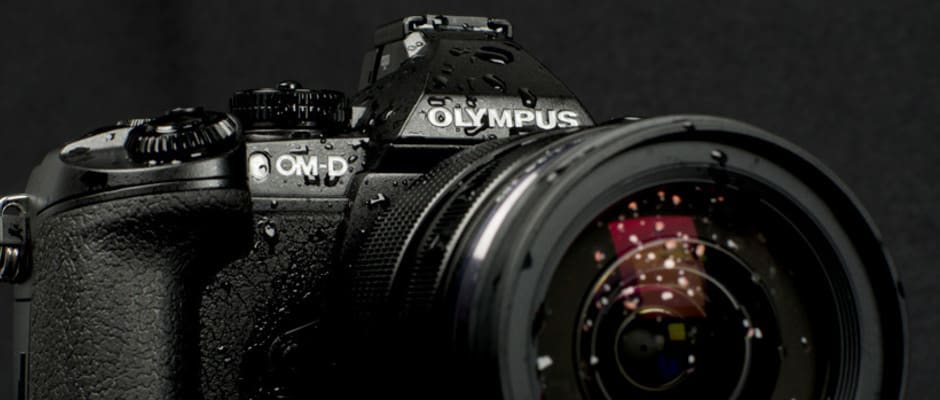2013 Best of Year Camera Awards
After putting dozens of cameras through our labs, we're here to tell you which are the very best.
 Credit:
Credit:
Recommendations are independently chosen by Reviewed's editors. Purchases made through the links below may earn us and our publishing partners a commission.
{{boy_banner}}This article contains our picks from 2013. Looking for the best cameras of 2014? Check out our 2014 Best of Year Camera Awards.{{/boy_banner}}
While 2012 saw a host of excellent new full-frame and flagship cameras hit the market, 2013 brought plenty of innovation as the camera industry adapts to changing times. From more affordable full-frame cameras, to a slew of new incredible fixed-lens cameras aimed at enthusiasts, and even pod-like lens-cameras for your smartphone, the camera industry has been quick to try new things.
Still, with two new excellent flagships from Micro Four Thirds and improving performance across the board, it's hard to look at 2013 as anything other than the year of mirrorless cameras. Every camera manufacturer now has a mirrorless lineup, with options for casual shooters and professionals alike. After taking the entire field into account and putting more than 100 cameras through our rigorous lab tests, we've culled down the list to give you the best cameras of 2013.
Editor's Note: Looking for more great cameras? We've reviewed plenty since the turn of the year. Head right here to see all of our latest camera reviews.
{{brightcove '2797511336001'}}
Camera of the Year - Olympus OM-D E-M1

Read our full review of the Pentax K-50 here
Runner-up - Nikon D5200
One area where the Pentax K-50 does struggle is in video features—it doesn't even have an HDMI jack, something practically every point-and-shoot under the sun now has. The D5200 picks up the slack there with full manual control for video, a microphone jack, and, yes, an HDMI port. The D5200 backs that up with excellent video quality, as well as excellent all-around performance. Nikon has just refreshed this line with the D5300—adding WiFi, GPS, 1080/60p shooting, and a slightly larger screen—but the D5200 should be available as a steal as stocks dwindle. (MSRP $799.95)
Read our full review of the Nikon D5200 here
Best Value DSLR - Sony A58

Read our full review of the Sony A58 here
Runner-up - Nikon D3200
Buying a DSLR means committing to a lens system, and for those looking at Nikon there's no more affordable option than the D3200. We don't feel the D3200 quite outdoes the A58, but it was an excellent performer in our labs and is an easy camera to learn and grow with. Its MSRP still stands at $699.95 with a kit lens, but the kit can be found almost everywhere at retail for $549.99. (MSRP $699.95)
Read our full review of the Nikon D3200 here
Best High-End Mirrorless Camera
Olympus OM-D E-M1

Read our first impressions review of the Sony NEX-5T here
Runner-up - Fujifilm X-A1
Few associate Fujifilm's superb line of X-series cameras with the word "value." Fuji has built its name as a camera maker in the last two years by producing attractive, well-built bodies that appeal to more advanced shooters. With the X-A1, Fuji has produced a body that looks like the higher-end X-series cameras, but is built of much cheaper stuff. While we aren't fans of that particular trade-off, there's no cheaper way to get into Fuji's excellent X series. At $599.99 with a kit lens, the X-A1 is a bargain buy that's hard to ignore. (MSRP $599.99)
Read our full review of the Fujifilm X-A1 here
Best Prosumer Compact Camera - Ricoh GR

Read our full review of the Ricoh GR here
Runner-up - Fujifilm X100S
While the Ricoh GR outperforms it slightly, the Fujifilm X100S does have one major trump card: its hybrid optical/electronic viewfinder. It costs a pretty penny, but there's no better way to experience the classic feel of shooting with a rangefinder on a modern camera than with the X100S. Add to that the improvements Fuji made in autofocus speed, image quality, and general operation over the X100, and the X100S is hard to pass up. (MSRP $1,299.00)
Read our full review of the Fujifilm X100S here
Best High-End Point-and-Shoot
Sony RX100 II

Read our full review of the Sony RX100 II here
Runner-up - Canon G16
Death, taxes, and Canon's annual G-series update. Some things are truly dependable. Canon's G16 is the latest iteration of the company's long-running series, offering excellent video quality, improved low light performance, and plenty of manual control. The chintzy tunnel-vision viewfinder is firmly in the "better than nothing" category, but the G16 is still one of the best point-and-shoot cameras you can buy. (MSRP $549.99)
Read our full review of the Canon G16 here
Best Mid-Range Point-and-Shoot
Canon S120

Read our full review of the Canon 330 HS here
Runner-up - Sony WX80
The Canon 330 HS is the best performing sub-$200 camera we tested this year, but the Sony WX80 comes close. The WX80 has just a 7x optical zoom, but it has slightly better styling, is a little more compact, and also comes with Wi-Fi. The WX80's street price has dropped to $159.99, and it should also be very affordable throughout the holiday season. (MSRP $169.99)
Read our full review of the Sony WX80 here
Best Superzoom Camera - Canon SX50 HS

Read our full review of the Olympus TG-2
Runner-up - Nikon AW110
Even though the TG-2 retains its throne as the best waterproof camera of 2013, the Nikon AW110 is a perfectly good alternative. The AW110 is just as tough as the TG-2 in everyday use, offers similar image quality, and has a fantastic mapping interface (with points of interest) that is the best use of an in-camera GPS on the market. The TG-2 may take home top honors here, but we wouldn't fault anyone for opting for the Nikon based on personal preference. (MSRP $349.95)
Read our full review of the Nikon AW110 here
{{ gallery "large vanity" }}

